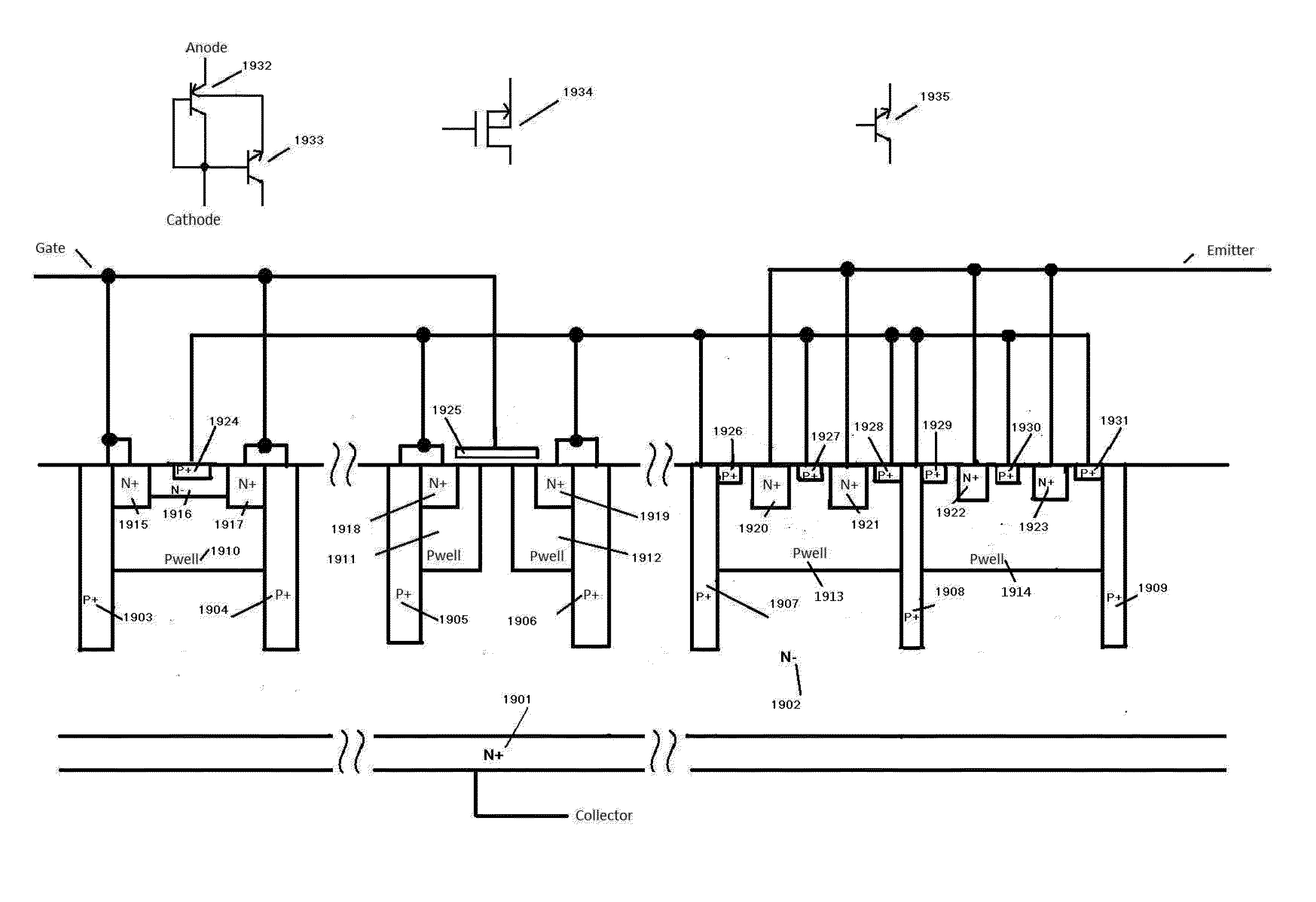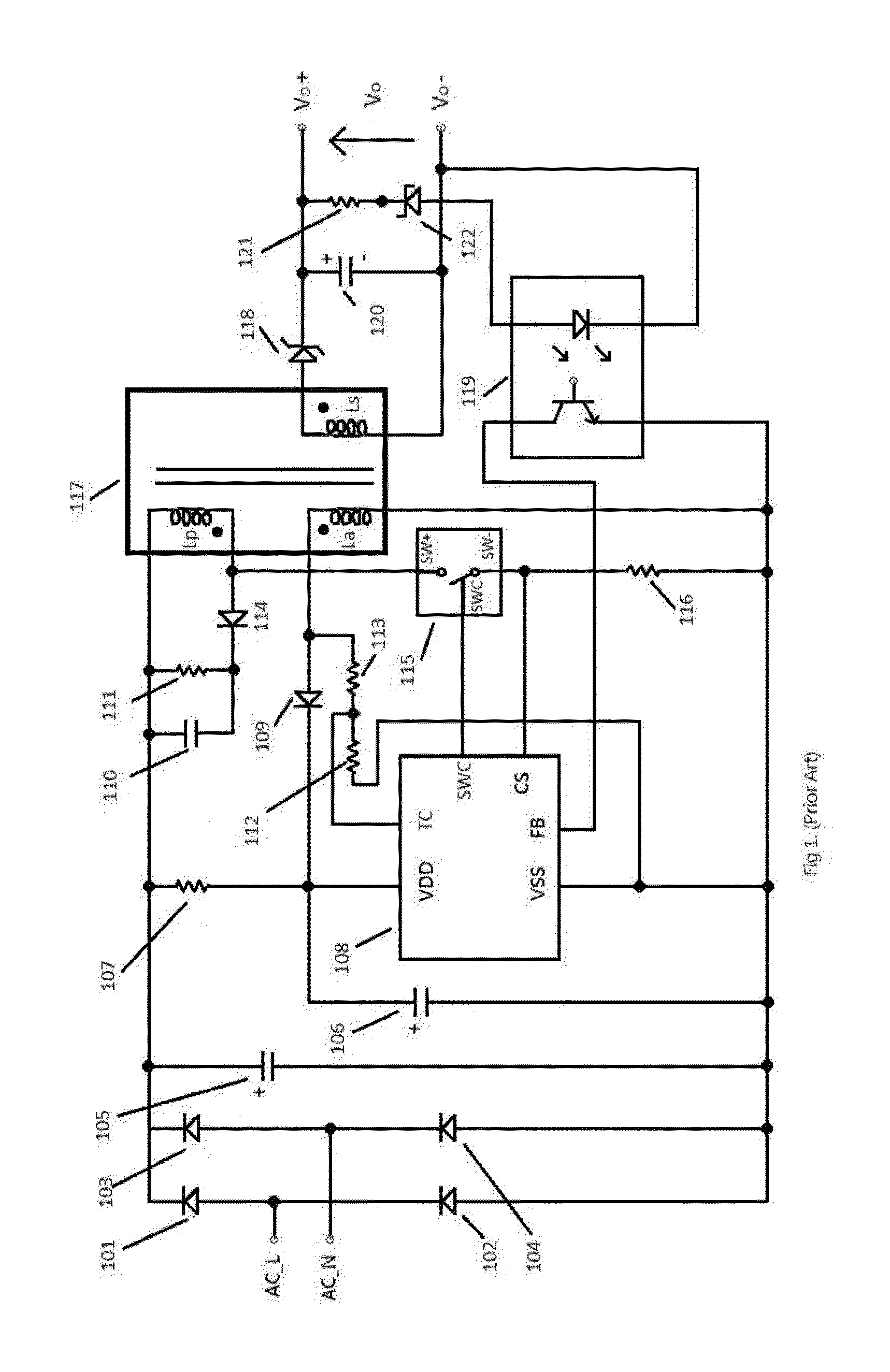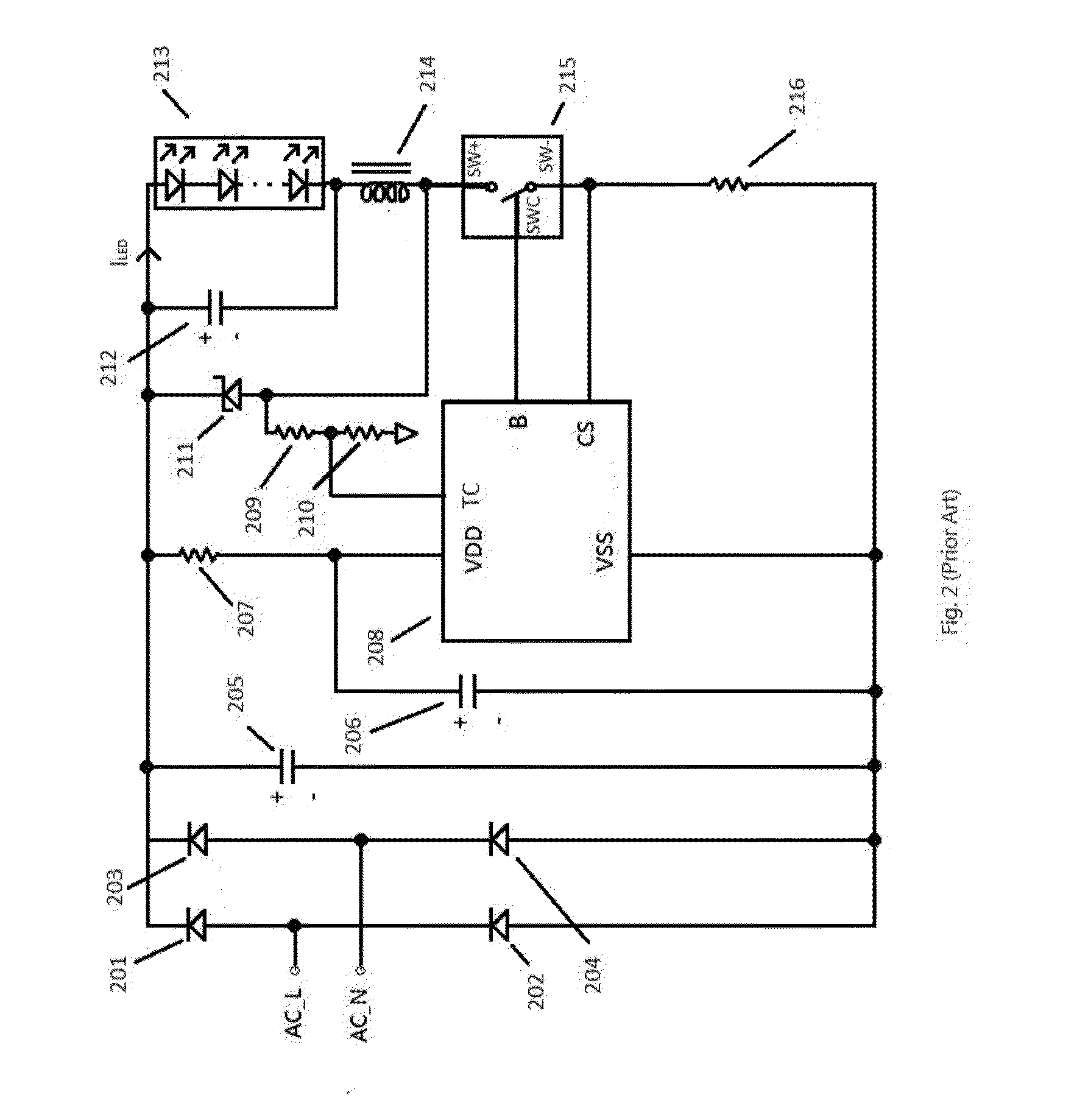High Voltage Semiconductor Power Switching Device
a switching device and high-voltage technology, applied in semiconductor devices, semiconductor/solid-state device details, diodes, etc., can solve the problems of reducing efficiency, not suitable for switching converter applications, and substantial power for driving the bas
- Summary
- Abstract
- Description
- Claims
- Application Information
AI Technical Summary
Benefits of technology
Problems solved by technology
Method used
Image
Examples
Embodiment Construction
[0151]FIG. 4 is a schematic circuit diagram for an embodiment of the invented three pin high voltage Darlington bipolar power switching device with fast turn off time. High voltage bipolar transistors 401 and 402 form a conventional Darlington bipolar transistor. The current gain of the Darlington transistor is the product of the individual current gain of transistor 401 and transistor 402. Typical current gain of 100 to 400 can be achieved. Therefore, base current to turn on the Darlington transistor is small and the associated power is comparable to the gate drive for power MOSFET power switching device for handling the same output power level. The addition of the diode 403 is to provide a discharging path for the base of transistor 402 during switch off of the Darlington transistor. Hence, diode 403 ensures fast base relaxation and thus fast turn off of this invented power switching device. For diode 403, Schottky diode is more preferred due to the low forward voltage as compared...
PUM
 Login to View More
Login to View More Abstract
Description
Claims
Application Information
 Login to View More
Login to View More - R&D
- Intellectual Property
- Life Sciences
- Materials
- Tech Scout
- Unparalleled Data Quality
- Higher Quality Content
- 60% Fewer Hallucinations
Browse by: Latest US Patents, China's latest patents, Technical Efficacy Thesaurus, Application Domain, Technology Topic, Popular Technical Reports.
© 2025 PatSnap. All rights reserved.Legal|Privacy policy|Modern Slavery Act Transparency Statement|Sitemap|About US| Contact US: help@patsnap.com



